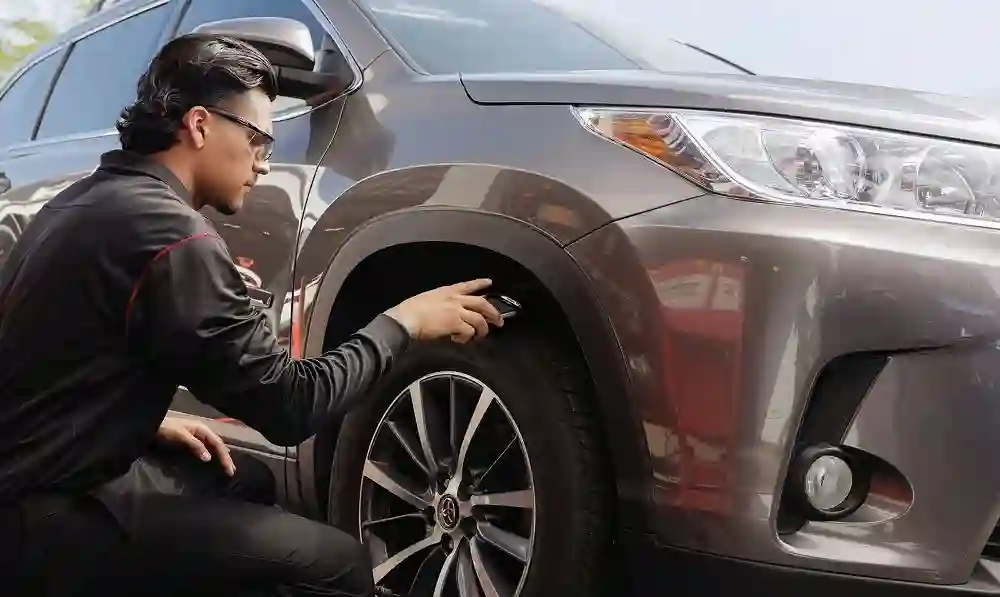How to Choose the Right Tires for Your Car

So, you’re ready to get new tires for your car. Whether you’re finally replacing those bald tires that scream “I’m living dangerously,” or you’re just upgrading for a smoother ride, choosing the right set is crucial. I’ve been down the rabbit hole of tire confusion myself (trust me, I’ve made all the wrong choices before)—but now, I can pass on a little knowledge so you don’t have to go through the same headaches I did.
When I first bought my car, I had absolutely no idea what tire types even meant. They all looked the same to me—black, round, and…well, I didn’t pay attention to much else. Fast forward past a couple of sketchy tire choices and a few flat tires on the highway, and now I know better.
Anyway, let’s get into it. Here’s what you need to know about picking the right tires for your car.
Tire Types – The Basics
I’m going to level with you: the wrong tire can mess with your ride in ways you didn’t even know were possible. I once bought all-season tires because the name sounded so convenient. Spoiler alert: they were terrible in snow. Lesson learned.
All-Season Tires: The Jack-of-All-Trades
Most drivers go with all-season tires. It’s like that one friend who’s always trying to juggle 12 things at once. These tires give decent performance in almost every condition—dry roads, rain, even light snow. But if you’re looking for serious winter traction or high-performance handling, all-seasons might leave you wishing for more.
- Pro tip: If you live in a place where winter doesn’t mean freezing rain and snow, all-seasons will likely get the job done just fine.
- My first set? Yeah, those didn’t cut it when I drove up a mountain for a ski trip. Let’s just say I was slipping more than a clumsy penguin.
Winter Tires: For Snow (and Ice) Lovers
Winter tires are like the superhero of tires. They’re built to conquer snow and ice, which is something all-season tires can only dream of. The rubber compounds stay flexible in freezing temperatures, helping you grip the road like a pro—especially when things get slick. But once the snow melts, winter tires are about as helpful as a snow shovel in July.
- Fun fact: Winter tires don’t just help with traction—they also make braking way more effective. I learned this the hard way after my car did a little “drift” into a snowbank during my first winter driving experience. (Don’t ask how I got the car out. It wasn’t pretty.)
- Key takeaway: Don’t use these in warm weather unless you want them to wear out faster than my old dog’s tennis ball after one too many fetch games.
Summer Tires: Fast and Furious (But Not in Winter)
Summer tires are all about performance. If you’ve got a sports car or a need for speed, these babies are going to give you the best handling and grip in dry or wet conditions. But winter? Forget it. They’ll turn into hard bricks faster than you can say “I should’ve checked the weather forecast.”
- My lesson: I had summer tires once, and while they were great on sunny days, they basically turned into slip-and-slide devices during my first snowstorm. Lesson: don’t mess with summer tires unless it’s a heatwave.
- Fun fact: These tires love dry, warm conditions. It’s like their idea of heaven. Snow? They’re just like, “Yeah, we don’t do that.”
Performance Tires: The Fancy Ones
If you’ve got a car that demands the best in handling and cornering, then performance tires are what you want. These are the tires that make you feel like you’re in a Fast & Furious movie every time you take a corner a little too fast.
- Warning: They’re fantastic for gripping the road, but they come at a price—and not just monetarily. These tires are built for optimal conditions, and they won’t last as long when conditions get rough.
- Side note: I tried driving with them once in a torrential downpour (yep, bad idea). They’re phenomenal on dry roads, but once the rain came down, I was hanging onto the wheel like it was my last life raft.
Off-Road Tires: For the Adventurers
For those of us who think pavement is just a suggestion, off-road tires are for you. Whether you’re tackling a rocky trail or driving through the woods, these tires are made for rugged terrain. They’ve got deep treads, extra durability, and the grit to get you through the toughest paths.
- Real talk: If you’re not driving in mud or dirt, there’s no reason to get these. You’ll end up with a noisy, bumpy ride on regular streets—and it’ll be about as comfortable as a two-day camping trip with no coffee.
- Pro tip: You’ll want these if you’re the kind of person who says, “What do you mean I can’t take my car on that mountain trail?”
Size Matters: Understanding Tire Dimensions
This is where things get a little tricky. Tire size isn’t just a random set of numbers. The right size tire can affect how your car drives, how much fuel you burn, and how comfortable the ride feels.
The Tire Code Breakdown
Okay, here’s the deal. You’ll find a bunch of numbers and letters on the side of your tire. Looks confusing, right? Here’s how to decode it:
- Example: P215/65R15 95H
- P: Passenger car (that’s us!)
- 215: The tire’s width (in millimeters).
- 65: The sidewall’s height as a percentage of the tire’s width (in this case, it’s 65%).
- R: Radial construction (most tires these days are radial).
- 15: The diameter of the rim in inches.
- 95H: Load index (how much weight it can carry) and speed rating.
Tip: When you’re picking tires, make sure to stick with the size your car needs. It might be tempting to go for something bigger, but doing so could mess with your speedometer and handling.
Why Tire Size Matters
Choosing the wrong tire size is like picking the wrong pair of shoes. They might fit, but they’re not doing your car any favors. A larger tire gives you more stability, but it can also reduce acceleration. Smaller tires might give you a peppier ride but less stability.
- Pro tip: When in doubt, always follow the manufacturer’s recommended size. Your car’s not picky, but it does appreciate the right fit.
Tire Tread Patterns: They Matter More Than You Think
I used to think all tires were created equal. Turns out, tire treads are actually pretty important. They can make or break your driving experience.
Symmetrical Treads: The All-Arounders
These are your basic tires that work just fine in everyday conditions. The tread is pretty uniform all around, so the tire wears evenly and you don’t have to worry about anything too fancy.
- Best for: Commuting or casual driving. Just don’t expect them to change your life. They won’t.
Asymmetrical Treads: For the Curvy Roads
Asymmetrical tires are like a tire with a split personality. They’ve got different treads on the inside and outside, designed to improve handling, especially when cornering.
- Best for: Performance vehicles or people who love a good twisty road.
Directional Treads: For the Rain
If you’re driving in a place where it rains as much as it does in Seattle, directional treads are your best friend. They’re designed to channel water away from the tire, which helps prevent hydroplaning.
- Fun fact: I learned about directional treads the hard way after a close call with a puddle. I never looked at tires the same again.
Off-Road Treads: Get Dirty
If you’re into off-roading, deep tread patterns are your go-to. Mud, rocks, gravel—they laugh in the face of those.
- Pro tip: These tires make a wicked noise on the road, though. So, don’t expect a quiet ride.
Finding the Right Fit for Your Ride
Now that you’ve got all the info, here’s the kicker: choosing the right tires isn’t just about specs and size. It’s about knowing your needs. Do you drive on smooth highways? Get all-seasons. Live in a place where winter is a full-on character in your life? Winter tires are a must.
I once made the mistake of buying tires based purely on price, and let me tell you, I regretted it when I had to replace them three months later. Cheap doesn’t always mean a bargain.
A Quick Rundown of Tire Maintenance
Here’s the thing: you can pick the best tires in the world, but if you don’t take care of them, they won’t last. Simple maintenance goes a long way. Check your tire pressure. Rotate them regularly. Don’t let them get too old (or too bald—trust me, I’ve been there).
- I learned: Tire pressure is key. I’ll never forget the time I got a flat because I thought “eh, it’s probably fine.”
Anyway, choosing the right tire is important, but taking care of them? That’s the real game-changer.







